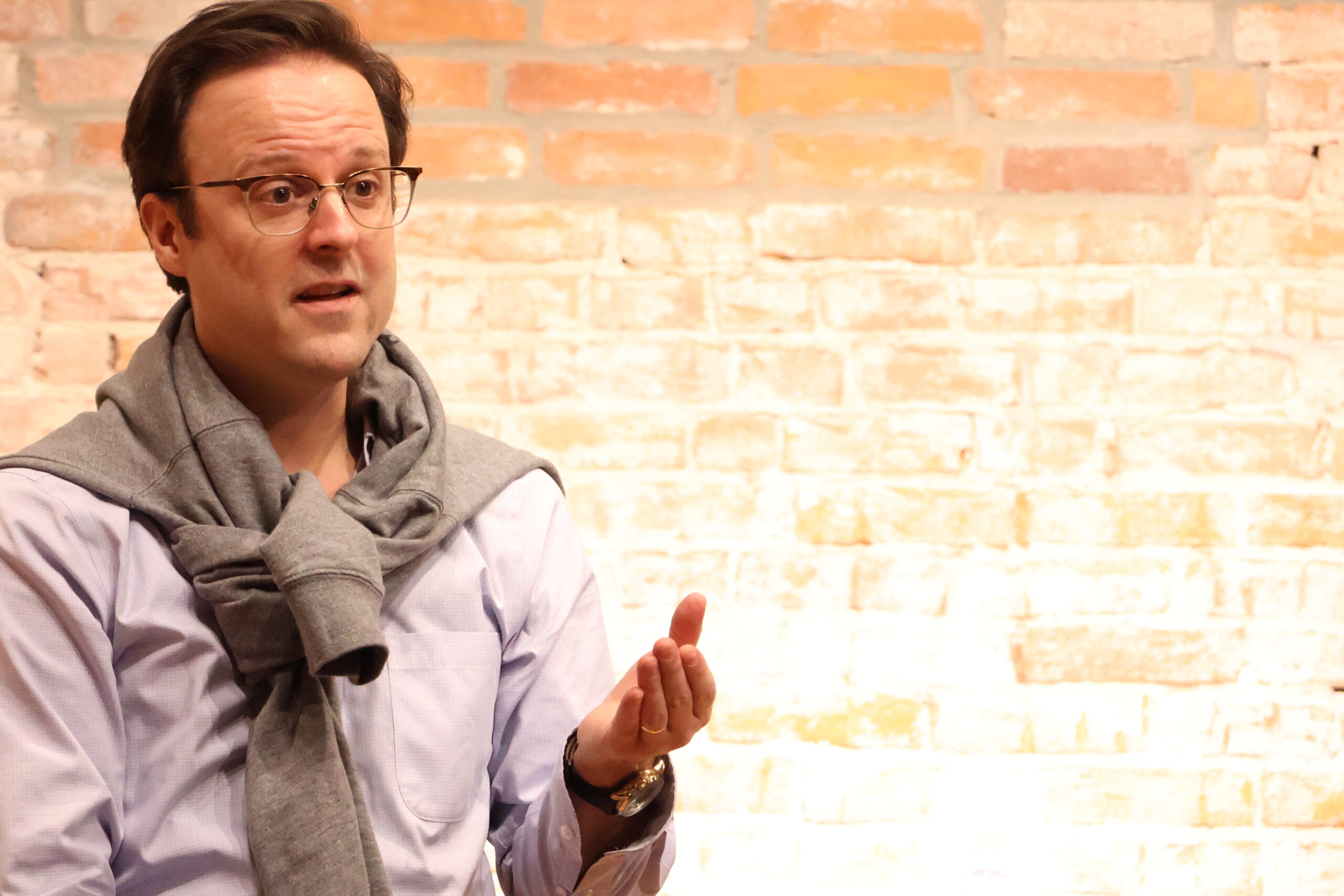Get an inside look at the process of creating RT productions with our IN CONVERSATION series
A Case for the Existence of God ran January 19th – February 4th at Riverside Theatre. Read our interview below with Riverside Producing Artistic Director and director of Case Adam Knight and Riverside Theatre’s Marketing Intern Tony Carter Walsh.
Thanks for taking the time to talk about A Case for the Existence of God. To open, what was it about this play that drew you to it?
AK: Samuel D. Hunter has been on my radar for a long time, in part because of the success of The Whale, but also because he was a playwright in residence at Signature Theatre, which was the first theater I worked at in New York City. When I saw the film The Whale at FilmScene last winter, it really, really moved me. It felt like a story that isn’t being told right now about the loneliness of modern life. That led me to this play which only premiered about a year ago in New York City. I’ve heard that this is Sam’s pandemic play, that in some ways he wrote it anticipating some of the limitations that the post-pandemic theater might be facing. For instance, this is only a two-person play, and it essentially exists on one unit set. It really spoke to me, not only as a human being, but also as a parent. It’s a lot about caretaking, and in particular how men are often not seen or don’t identify as caretakers. Both men in this play do, and that was my touchstone.
The rhythm of the play is punctuated by completing paperwork or calls from a social worker, and these seem like stand-ins for the system writ large. The system is almost a character in the piece.
AK: In my director’s notes, I write that one of the stage directions is that the playwright intended for the characters not to get up out of their chairs unless specified, and as you watch the play, you realize that they’re in their chairs for a very long time. That became for me a metaphor of this system that we’re tied to or glued to. And it takes a lot of work and effort and imagination to get up out of that system and to find your own two feet.
You mentioned that the stage directions are very explicit and there are other restrictions specific to the play. I’m curious, how did you approach working within those limitations?
AK: For me, it felt like a return to my New York days where I worked on a lot of new plays — and even though I wasn’t in the room with Sam when he was developing this play, I got very intrigued by what that process must have been like to lead to these choices. We as a production honor those choices, but also we become something like forensic detectives, having to retrace how the process may have worked, what those impulses were, what they led to, and how they come out of the inherent needs of the play, how they’re building to a satisfying dramatic conclusion. Yet our production very much honors the rules that the playwright laid out, which are so inherent to the play itself.
Considering disconnection is a theme in the play, there’s a moment when a literal physical connection happens but we don’t quite… we can’t wrap our minds around it until we’ve heard a few lines of dialogue. A really powerful moment that resonated even more because of the dramatic structure.
AK: Even reading the play, oftentimes I would get a half page in and then I would realize what was happening. This production tries to honor that pleasure and mystery. Not every play has to be spoon-fed to us. We can be delightfully confused, and I think that the play allows the audience to figure out the riddle.
Is there anything else you’d like to say about this play?
AK: One of the things that our dramaturg Rob Silverman Ascher highlighted in his work on the production is the epidemic of male loneliness that that seems to be happening in American society. This play, and I think some of Sam’s other work, touches on that, particularly the plight of rural Americans and people who, for whatever reason, don’t feel plugged into the larger zeitgeist of our country and where it’s going. I think that one of the more satisfying things about this play is that it showcases a world and two characters that aren’t often seen on stage. I guess the other thing I’ll say, for what it’s worth, is that I’m very proud of this play. I think it’s a play that, for me as a director, is bringing me back to my New York City body of work. This feels like the most New York play I’ve worked on in quite a long time. It feels incredibly fresh and contemporary. It works in a uniquely theatrical way, one that feels to me a lot like where the art form is going, and it’s really wonderful to share that aesthetic and that part of my work with Riverside’s audience. Sam, as we mentioned, lays out a lot of challenges, and I think the design team has really done a stellar job at meeting those. I would put this production alongside the top level off off Broadway theater that I’ve ever seen in New York City. And I think our audiences will feel the same way.
